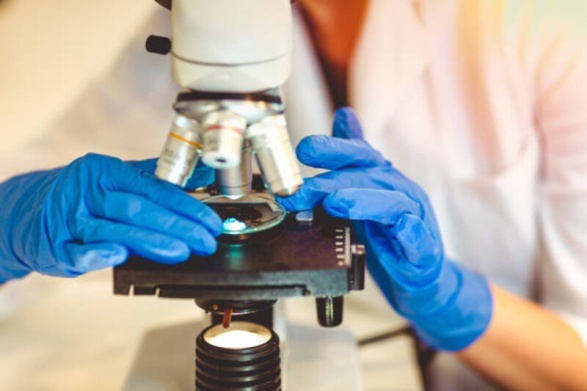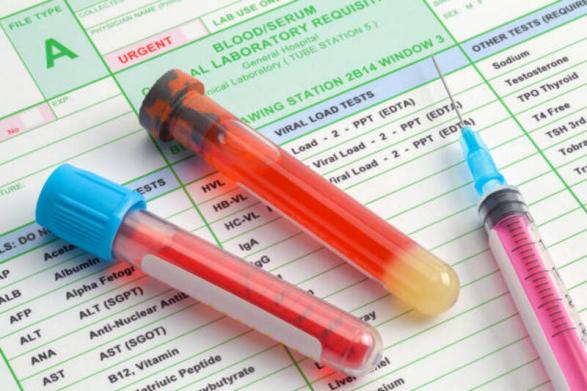Understanding Biopsy: A Comprehensive Guide
Dec 24, 2023 By Madison Evans
Whether you have recently heard the word “biopsy” from a medical professional or are simply seeking to learn more about the subject, this comprehensive guide is here to help. Biopsies can be intimidating, so our goal with this post is to clearly lay out and explain every step of biopsy procedure in order to make it as straightforward and stress-free as possible for all readers. We will cover topics such as how and when biopsies are used, what they entail, how they are performed, risks associated with them, their results, and what comes after a biopsy--giving you an exhaustive understanding of all aspects of the biomedical procedure. So let's begin!
Definition of Biopsy
A biopsy is a medical procedure whereby a sample of tissue or cells from an organ or other area of the body is taken and tested. This type of procedure is used to diagnose, rule out, or monitor treatments for numerous types of diseases and conditions.
Reasons for Conducting a Biopsy

Biopsy tests are typically conducted to diagnose a suspected disease or condition. The most common reasons for biopsy tests are to detect cancer, investigate the cause of an infection, or assess organ damage. These tests are conducted with the intention of finding out what is wrong and how best to treat it.
Diagnostic Purposes
The most common reason for biopsy is to detect cancer. Biopsy tests are extremely accurate in detecting and diagnosing a variety of cancers, including breast, skin, lung, liver, colon and prostate. In some cases, such as when there is an infection or inflammation present before the biopsy test, it can help doctors determine which type of antibiotic would be more effective in treating the condition.
Monitoring Purposes
Biopsy tests can also be used to monitor treatments for cancer and other conditions. These tests are conducted periodically to check on how a patient is responding to treatment or if there are any changes in their condition.
Types of Biopsies
There are a variety of biopsy procedures used to diagnose and investigate diseases. The type of biopsy performed will depend on the suspected diagnosis, which could be anything from skin cancer to infertility issues. Here is an overview of several common types of biopsies:
- Skin Biopsy: A small sample from a lesion or mole on the skin is collected and examined under a microscope.
- Bone Biopsy: A small piece of bone is taken from the body to determine if there are any abnormalities present that could indicate cancer, infection, or other conditions.
- Endoscopic Biopsy: This type of biopsy involves using an endoscope (a thin tube with a light and camera) to look inside the body for any abnormalities. This procedure is used to investigate the digestive tract, lungs, stomach, and other organs.
- Needle Biopsy: A sample of cells or tissue is taken from an organ with a needle that has a hollow inside. Generally used for samples from the liver, kidney, prostate gland, or lymph nodes.
How Biopsies are Performed?
The procedure for each type of biopsy is slightly different, but they all involve a preparation phase followed by the actual sample collection.
- Preparation: For most biopsies, you'll be asked to take off any clothing in the area of the sample collection and wear a hospital gown. You may also receive special instructions such as fasting for 8 hours before the procedure or taking antibiotics.
- Sample Collection: The actual biopsy will either involve a needle being inserted into the area or an endoscope being used to see inside the body.
- Post-Procedure: After the sample is collected, you may be asked to lie still for a few minutes before being allowed to get up and go home.
Risks Associated with Biopsies
Biopsy tests are generally considered safe procedures, but there are some risks associated with them. The most common risks include:
- Bleeding or bruising at the biopsy site
- Pain or discomfort at the biopsy site
- Infection (rare)
- Reaction to sedatives or anesthesia used during the procedure (very rare)
Results of Biopsies

The results of a biopsy test may take several days or even weeks, depending on the type of biopsy performed and what is being tested for. Generally, you'll be informed when your results are available and whether any further tests are needed.
What Comes After a Biopsy?
If the biopsy results reveal that a disease or condition is present, your doctor will discuss a treatment plan with you. This could involve medications, surgery, or additional tests. In some cases, no further treatment may be necessary if the biopsy results show that the cells are not cancerous or any other disease is present.
Conclusion
Now that you have a comprehensive understanding of biopsies, you can rest assured knowing exactly how they work and what to expect if you ever need one. Biopsy tests are an important part of diagnosing and monitoring diseases, so this knowledge will help guide you through the process should the need arise. If there is still any confusion or additional questions after reading this post, make sure to speak with your doctor for further advice.
-
 Jul 10, 2024
Jul 10, 2024Discovering the Best Hair Growth Remedy: Onion vs. Garlic
Discover the benefits of using onion and garlic for hair growth. This guide covers their unique properties, preparation methods, and effectiveness for achieving stronger, healthier hair.
-
 Oct 18, 2023
Oct 18, 2023Esophageal Cancer: Understanding its Signs and Symptoms
Explore this comprehensive guide covering everything you need to know about esophageal cancer - its types, causes, signs, diagnoses, treatments, prevention, and management.
-
 Jul 09, 2024
Jul 09, 2024The Magic of Black Sesame Seeds for Your Wellness
Discover the numerous health benefits of black sesame seeds and learn delicious ways to incorporate them into your diet for a boost in nutrition and immune support.
-
 Oct 10, 2023
Oct 10, 2023Understanding Bladder Cancer: Key Symptoms and Early Warning Signs
An in-depth look at bladder cancer, including key symptoms, early warning signs, common risk factors, recommended actions upon diagnosis, and potential treatment options.
